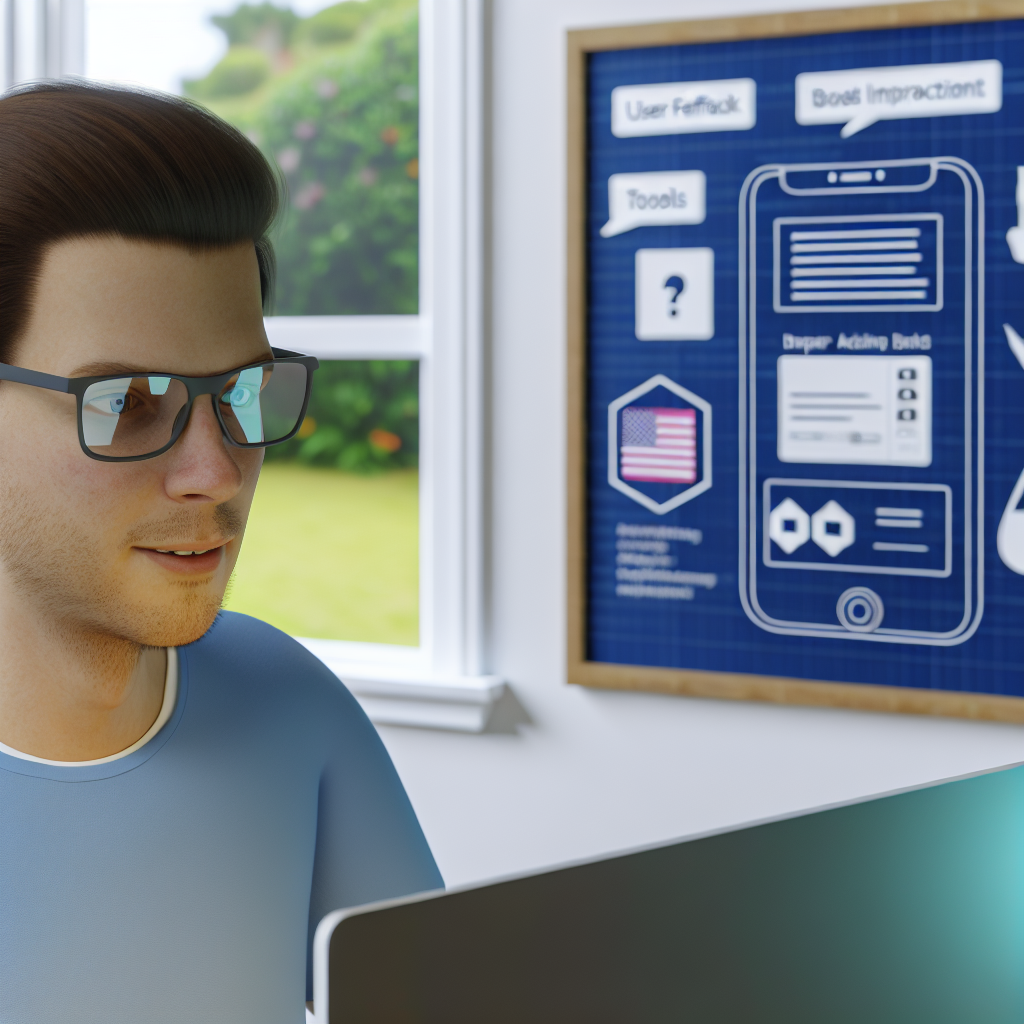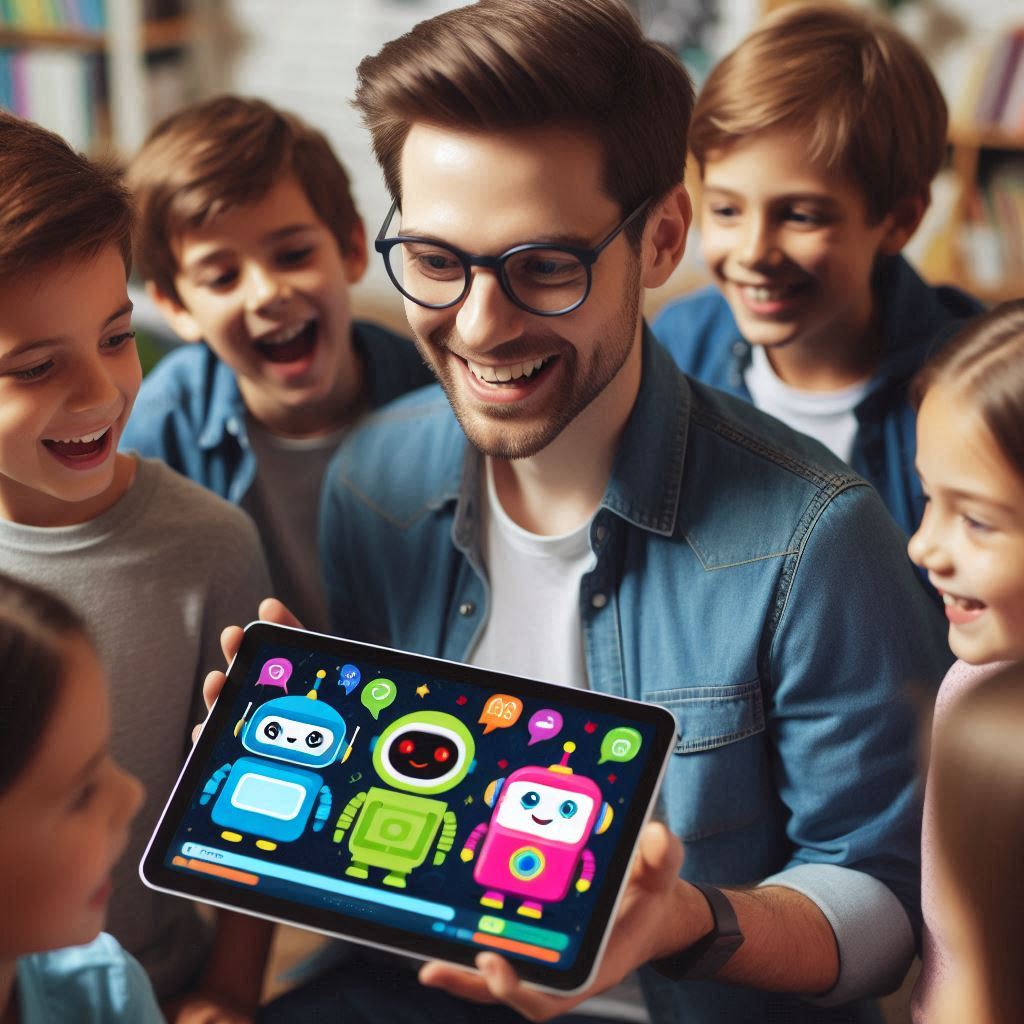Introduction
Let’s explore advanced gamification in employee time tracking software solutions
Gamification and its relevance in the workplace
Gamification refers to applying game-design elements in non-gaming contexts.
It engages users and fosters motivation. In the workplace, it enhances productivity and boosts morale.
By integrating game mechanics, organizations cultivate a more dynamic environment.
Overview of employee time tracking challenges faced by organizations
Organizations face various challenges with employee time tracking.
Traditional systems can feel tedious and uninspiring for staff.
Employees often struggle to remain attentive and engage with monotonous processes.
This lack of engagement can lead to inaccurate time reporting and lower productivity levels.
Concept of integrating advanced gamification techniques in employee time tracking software solutions
Integrating advanced gamification techniques into employee time tracking software presents a promising solution.
By incorporating elements like points, badges, and leaderboards, employers create a competitive yet supportive atmosphere.
Employees experience a sense of accomplishment as they track their time.
This approach transforms mundane tasks into rewarding experiences, enhancing engagement.
Advanced gamification can also offer personalized feedback tailored to individual performance.
Employees receive insights into their time management skills and areas for improvement.
This feedback not only motivates employees but also encourages a culture of continuous learning.
Innovative Tech Solutions, Tailored for You
Our leading tech firm crafts custom software, web & mobile apps, designed with your unique needs in mind. Elevate your business with cutting-edge solutions no one else can offer.
Start NowAdditionally, incorporating social elements further enhances employee interaction.
By allowing staff to collaborate or compete with colleagues, organizations build a sense of community.
Encouraging peer recognition fosters accountability and enhances team spirit.
Furthermore, integrating real-time analytics helps organizations identify trends and areas needing attention.
Managers gain valuable insights to improve processes and employee performance.
This data-driven approach fosters better decision-making and drives organizational success.
Therefore, advanced gamification in employee time tracking software can revolutionize how organizations track performance.
By transforming time tracking into an engaging experience, employers boost productivity and employee satisfaction.
Organizations willing to embrace this innovative approach stand to gain significant advantages in today’s competitive environment.
The Evolution of Time Tracking in the Workplace
Time tracking has undergone significant changes throughout history.
Organizations used various methods to monitor employee hours and productivity.
Understanding this evolution sheds light on today’s sophisticated time tracking solutions.
Historical Perspective on Time Tracking Methods
Initially, businesses employed simple methods to track employee hours.
Common practices included:
- Punch clocks: Employees inserted cards into machines that recorded their arrival and departure times.
- Manual logs: Workers wrote their hours in notebooks. Supervisors later calculated the total hours worked.
- Time sheets: Employees filled out weekly time sheets, detailing the hours worked on different tasks.
These methods had limitations, often risking accuracy and efficiency.
Human error could easily lead to discrepancies.
As organizations grew, the demand for more reliable tracking systems emerged.
The Shift from Traditional Timekeeping to Digital Solutions
The digital revolution brought significant advancements to time tracking.
Businesses began adopting digital solutions to enhance accuracy and streamline processes.
Some key transitions include:
- Digital time clocks: Electronic systems replaced traditional punch clocks, automatically recording entry and exit times.
- Cloud-based solutions: Online platforms allowed employees to log their hours from any device with internet access.
- Integration with payroll: Software systems began integrating time-tracking functionalities into payroll management, simplifying calculations.
These digital solutions promised improved accuracy and ease of use.
Organizations experienced reduced administrative burdens while gaining better insights into employee productivity.
Introduction of Gamification in the Early Stages of Time Tracking Software
As time-tracking technology evolved, developers sought innovative ways to enhance user engagement.
Gamification emerged as a powerful tool in the early days of time tracking software.
Seamless API Connectivity for Next-Level Integration
Unlock limitless possibilities by connecting your systems with a custom API built to perform flawlessly. Stand apart with our solutions that others simply can’t offer.
Get StartedThis approach involved using game-like elements to encourage participation.
Key features included:
- Points systems: Employees earned points for logging hours, demonstrating accountability and punctuality.
- Leaderboards: Displaying rankings fostered friendly competition among teams, motivating employees to track their time diligently.
- Badges and rewards: Recognizing consistent and accurate time tracking with badges and tangible rewards incentivized employees.
Gamification transformed time tracking from a mundane task into an engaging experience.
Employees started viewing time tracking as an achievement rather than a chore.
Modern Advancements in Gamification for Time Tracking Software
In recent years, advanced gamification strategies have revolutionized employee time tracking software.
Today’s solutions incorporate sophisticated features that enhance user engagement and productivity.
These advancements build on the foundational principles of gamification.
Enhanced User Experience
Modern time tracking software focuses on user-friendly designs.
Improved interfaces and user experiences streamline time logging.
Key elements include:
- Intuitive dashboards: Users can quickly view their progress and time entries at a glance.
- Mobile applications: Employees can track their time conveniently from smartphones and tablets.
- Customizable settings: Organizations can tailor the software to their unique workflows and team structures.
Real-Time Feedback
Timeliness is vital in today’s fast-paced work environments.
Modern software solutions provide real-time feedback to employees.
This immediate data influences behavior by:
- Instant notifications: Reminders encourage employees to log their hours promptly.
- Progress tracking: Users receive updates on their productivity levels, promoting awareness and accountability.
- Goal-setting features: Employees can set personal time-tracking goals, enhancing motivation.
Incorporating Social Elements
Social interaction plays a significant role in modern gamification strategies.
Integrating social features fosters teamwork and engagement.
Notable aspects of this approach include:
- Team challenges: Groups can engage in challenges that encourage collective time tracking efforts.
- Peer recognition: Employees can acknowledge and celebrate each other’s achievements, fostering camaraderie.
- Discussion forums: Users can share time management tips and strategies, building a supportive community.
Data Analytics and Insights
Advanced time tracking solutions leverage data analytics for continuous improvement.
These systems aggregate data to provide insights into employee performance.
Key benefits include:
- Trend analysis: Organizations can identify patterns and trends in employee productivity over time.
- Resource allocation: Data helps managers allocate resources effectively based on time usage insights.
- Personalized coaching: Managers can provide tailored support based on individual performance data.
Combining Gamification with Learning
Today’s time tracking solutions intertwine gamification with learning opportunities.
This combination benefits both employees and employers by enhancing skill development.
Features include:
- Interactive training modules: Employees can access training while tracking their time, learning efficient practices.
- Skill-based challenges: Employees can engage in challenges that enhance their skills while monitoring their time effectively.
- Feedback loops: Continuous feedback reinforces learning and time management skills, promoting growth.
The Future of Gamification in Employee Time Tracking
The future of gamification in time tracking software looks promising.
As technology continues to evolve, businesses will enhance these systems.
Transform Business with Custom CRM & ERP Solutions
Elevate your operations with a CRM or ERP tailored for you. Let’s build the perfect solution that others can't replicate—crafted to match your business's needs like no other.
Get StartedKey trends likely to shape the future include:
- AI and machine learning: These technologies will automate processes, providing personalized experiences for users.
- Virtual reality (VR): Innovative VR integrations could create immersive learning experiences for employees.
- Cross-platform functionality: Future solutions will likely work seamlessly across various devices and platforms, increasing accessibility.
In fact, the evolution of time tracking in the workplace reflects broader changes in technology and employee dynamics.
Advanced gamification strategies have fueled this transformation, enhancing productivity and engagement.
As organizations embrace these developments, the future of employee time tracking looks bright and promising.
Read: Transform Coaching with AI-Powered, White-Label Solutions
Understanding Gamification
Gamification refers to the application of game-like elements in non-game contexts.
It aims to motivate and engage users through interactive experiences.
By embedding game mechanics into everyday tasks, businesses can enhance user participation and enjoyment.
The core principles of gamification are:
- Point systems: Users receive points for completing tasks, fostering a sense of achievement.
- Leaderboards: Ranking users based on their performance creates healthy competition.
- Badges: Users earn badges for reaching milestones, encouraging continued engagement.
- Challenges: Setting goals and challenges inspires users to push their limits.
- Feedback: Instant feedback on achievements helps users understand their progress.
Psychological Aspects of Gamification
Understanding the psychological aspects behind gamification enhances its effectiveness.
Motivation plays a crucial role in user engagement.
Two primary theories explain motivation in gamification:
- Intrinsic motivation: This occurs when users engage in an activity for enjoyment or personal satisfaction. Gamification taps into this by making tasks enjoyable.
- Extrinsic motivation: This involves external rewards, such as points or prizes. Gamification enhances extrinsic motivation through tangible rewards for task completion.
Users often experience a sense of accomplishment when they achieve goals.
This feeling can drive increased engagement and productivity.
Additionally, gamification leverages social dynamics, as users often compete with peers.
This competitive spirit can encourage users to work harder and achieve more.
Engagement Theories in Gamification
Several engagement theories can be applied to gamification, improving user interaction:
- Self-Determination Theory: Users need autonomy, competence, and relatedness. Gamification fosters these needs by giving users control over their actions.
- Flow Theory: Achieving a state of flow occurs when users are fully immersed in an activity. Gamification facilitates this by balancing challenge and skill levels.
- Social Learning Theory: This theory emphasizes learning through observation. Gamification creates environments where users can learn from each other’s successes.
By applying these theories, gamification can significantly boost employee engagement.
Employees become excited about their tasks, resulting in higher productivity levels.
Enhancing Productivity Across Various Sectors
Gamification enhances productivity across various sectors by creating engaging experiences.
Here are some ways it can do this:
- Sales: Sales teams benefit from gamification by tracking performance through leaderboards. This encourages healthy competition among team members.
- Customer Service: Gamifying customer support tasks can boost agent morale and efficiency. Agents could earn rewards for faster resolution times.
- Health Care: In healthcare settings, gamification can motivate staff to meet training targets. Healthcare professionals can earn badges for completing necessary training modules.
- Retail: Retail sales associates can improve their performance through gamified training programs. Employees could earn points for mastering new product knowledge.
- Human Resources: HR departments can utilize gamification to enhance recruitment processes. Gamifying onboarding increases employee retention as new hires feel more engaged.
In each sector, gamification encourages employees to actively participate.
Engaged employees work harder and demonstrate increased loyalty to their organizations.
Organizations also benefit from higher productivity and overall morale.
Tailored Tech Solutions to Drive Your Business Forward
Maximize your business potential with custom tech strategies. We deliver bespoke solutions that others can’t match, designed to solve your specific challenges with precision and impact.
Contact UsUnderstanding gamification and its core principles can transform organizations.
By leveraging psychological theories, businesses can motivate and engage their employees.
The effectiveness of gamification leads to improved productivity in various sectors.
Organizations can create vibrant work environments simply by incorporating game elements.
Ultimately, gamification enhances the overall employee experience and drives success.
Read: Master Global Data Privacy with Advanced Compliance Automation
Benefits of Advanced Gamification in Time Tracking
Enhanced Employee Engagement
Gamification effectively increases employee participation and interest in time tracking systems.
By transforming mundane tasks into engaging experiences, employees stay motivated.
This approach combines elements of games, such as points, badges, and challenges, making time tracking enjoyable.
Here are key ways gamification enhances engagement:
- Competition: Employees enjoy friendly competition, which motivates them to track their time diligently.
- Recognition: Displaying achievements fosters a sense of accomplishment and boosts enthusiasm.
- Progress Tracking: Visual representations of progress encourage employees to reach their goals.
- Fun Elements: Incorporating fun challenges keeps employees interested and entertained.
Employee engagement typically results in better productivity and satisfaction.
The incorporation of gamified elements yields greater participation rates in performance tracking.
This transformation helps organizations cultivate a vibrant workplace atmosphere.
An engaged workforce also displays stronger commitment, leading to lower turnover rates.
Improved Time Management
Gamification equips employees with tools that enhance their time management skills.
Games create an environment that motivates better time utilization and discipline.
Through engaging tasks, employees become conscious of how they allocate their time.
Here’s how gamification contributes to improved time management:
- Goal Setting: Gamified systems encourage employees to set specific, achievable objectives.
- Task Prioritization: Employees learn to prioritize tasks based on urgency and importance.
- Feedback Mechanism: Instant feedback helps employees adjust their strategies for better performance.
- Time Awareness: Gamification cultivates a mindful attitude towards time management.
As employees hone their time management skills, they contribute positively to organizational goals.
Enhanced time utilization boosts productivity and efficiency across teams.
Additionally, improved time management leads to more streamlined workflows.
Employees develop a healthier work-life balance, reducing stress and enhancing job satisfaction.
Higher Accountability
Gamification fosters a sense of accountability among employees.
By implementing features like leaderboards, organizations create a culture where performance is transparent.
This transparency prompts employees to take ownership of their time management practices.
Key benefits of accountability through gamification include:
- Leaderboards: Publicly posting performance promotes healthy competition and encourages improvement.
- Reward Systems: Offering rewards for achievements motivates employees to reach their goals.
- Peer Recognition: Employees appreciate recognition from their peers, enhancing teamwork and solidarity.
- Personal Accountability: Regular progress updates remind employees of their commitments and responsibilities.
Higher accountability boosts morale and team cohesion.
When employees understand that their contributions matter, they feel more invested in their work.
This enhanced accountability translates to improved performance, as employees strive to meet their goals.
Companies witnessing this accountability often experience reduced absenteeism and increased engagement.
In essence, the advanced gamification of employee time tracking software offers numerous benefits.
Enhanced employee engagement leads to increased participation and satisfaction.
Improved time management equips employees with crucial skills for success.
Higher accountability fosters a culture of ownership and transparency within teams.
By applying these gamified elements, organizations can create a dynamic and productive work environment that nurtures growth and collaboration.
Read: Optimize Cold Email Outreach with AI-Powered Email Automation

Features of Advanced Gamification in Time Tracking Software
In today’s competitive business environment, organizations must leverage technology to enhance employee engagement and productivity.
Advanced gamification in employee time tracking software offers innovative solutions that drive motivation.
By incorporating gaming elements, companies can foster a vibrant and rewarding workplace atmosphere.
Let’s explore some key features that can transform time tracking into an engaging experience.
Leaderboards: Fostering Competitive Motivation
Leaderboards serve as a central feature in gamified time tracking software.
By displaying top performers, these digital boards create a sense of healthy competition among employees.
Here’s how leaderboards effectively boost motivation:
- Visibility: Employees crave recognition. Leaderboards provide public acknowledgment of their efforts, enhancing their visibility within the organization.
- Encouragement: Friendly competition encourages employees to improve their performance consistently. Everyone strives to climb the leaderboard, which can lead to increased productivity.
- Goals: Leaderboards help set performance benchmarks. Employees gain clarity on the expectations and can aim to hit those targets.
- Team Spirit: Leaderboards can be configured for team rankings. This approach promotes collaboration and collective goal achievement among team members.
- Instant Feedback: When performance is displayed in real-time, employees receive immediate feedback. This can reinforce desirable behaviors and motivate others to follow suit.
Overall, leaderboards create a dynamic work environment and instill a performance-driven culture.
With the right framework, businesses can harness competition to uplift team spirit and individual contributions.
Points and Rewards System: Motivating Through Task Completion
A well-designed points and rewards system incentivizes employees to stay engaged with their tasks.
This feature transforms mundane time tracking into an exciting and rewarding experience.
Here’s an overview of how organizations can create a successful points system:
- Task-Based Points: Assign points to specific tasks based on their complexity or urgency. Employees earn points as they complete these tasks, leading to a tangible sense of achievement.
- Milestone Bonuses: Implement a system of bonuses for reaching specific milestones. Employees feel more driven when they know significant accomplishments yield extra recognition.
- Integration with Daily Activities: Link points to daily activities beyond regular tasks. Reward employees for attending meetings or collaborating with colleagues to enhance engagement.
- Point Redemption: Offer various rewards when employees accumulate points. Rewards can range from gift cards to extra time off, making the system appealing and motivating.
- Clear Communication: Maintain transparency regarding how points are earned and redeemed. Clear communication ensures that employees understand the system and stay motivated.
By implementing a points and rewards system, organizations can cultivate a vibrant atmosphere where employees recognize their contributions.
As engagement increases, so does productivity, resulting in overall organizational success.
Badges and Achievements: Recognizing Employee Accomplishments
Badges and achievements play a crucial role in gamification by acknowledging employee accomplishments.
These visual symbols of success promote positive reinforcement, motivating employees to excel.
Here’s why recognizing accomplishments is vital:
- Visual Representation: Badges provide a tangible representation of achievements. Employees can display these on their profiles, showcasing their skills and dedication.
- Motivation: Earning badges encourages employees to pursue new challenges. Knowing they can gain recognition motivates them consistently.
- Career Advancement: Badges can represent skills that contribute to career growth. Employees see a clear pathway for development, leading to enhanced job satisfaction.
- Peer Recognition: The social element encourages camaraderie among employees. When colleagues celebrate each other’s achievements, it fosters a supportive workplace culture.
- Gamified Learning: Badges can also recognize learning achievements. Employees earn badges for completing training modules, which enhances their skillset and promotes continuous education.
The importance of badges and achievements cannot be overstated.
By incorporating these features into time tracking software, organizations create a culture of recognition and support.
This not only improves morale but also enhances retention and loyalty among employees.
Basically, advanced gamification within employee time tracking software transforms monotonous tasks into engaging activities.
With features like leaderboards, a points and rewards system, and recognition through badges, organizations can foster a more motivated workforce.
Each feature serves to not only enhance productivity but also to promote a positive workplace culture.
As businesses continue to adopt these strategies, they will find that motivated employees lead to better outcomes for everyone involved.
Read: AI-Driven Video Script Optimization: Revolutionizing Content Creation
Case Studies of Successful Implementation
Overview of Organizations That Successfully Integrated Gamification in Their Time Tracking Systems
Various organizations have successfully implemented gamification strategies in their time tracking software.
These integrations actively enhance employee engagement, productivity, and satisfaction.
Here are a few notable examples:
- Duolingo : A marketing agency implemented gamified time tracking. They rewarded employees with points for timely task completion. These points could be redeemed for prizes and recognition, creating a fun atmosphere.
- Habitica: A tech startup integrated gamification into their project management tools. They used leaderboards to motivate teams, rewarding the top performers monthly. This method accelerated project completion rates and fostered healthy competition.
- Deloitte: A financial services firm adopted gamified time tracking to enhance efficiency. Employees earned badges for consistent performance and achieving deadlines. This initiative cultivated a culture of accountability and achievement.
- Omnicare: An educational institution utilized gamification to track staff attendance and engagement. They integrated quizzes and challenges related to professional development. This method improved knowledge retention and team cohesion.
Analyze Measurable Outcomes Such as Productivity Increase and Employee Satisfaction
The implementation of gamification strategies has yielded measurable outcomes across organizations.
Companies Duolingo, Habitica, Deloitte, and Omnicare reported significant improvements.
The following metrics highlight these advancements:
Productivity Increases
- Duolingo observed a 25% increase in project completion rates within three months.
- Habitica achieved a 30% spike in productivity after introducing leaderboards and points systems.
- Deloitte reported a 40% reduction in time wasted on unproductive tasks, thanks to clear goals.
- Omnicare experienced a 35% increase in collaborative project outcomes due to engagement challenges.
Employee Satisfaction
- Duolingo recorded a 45% higher employee satisfaction rate in post-implementation surveys.
- Habitica’s employee engagement score rose by 50%, reflecting a happier workforce.
- Deloitte noted a significant drop in employee turnover rates, decreasing by 20% within the first year.
- Omnicare received positive feedback about its learning process, improving morale by 30%.
Discuss Feedback from Employees and Management Post-Implementation
The feedback collected from both employees and management post-implementation reveals insightful perspectives about gamification in time tracking systems.
Employees and management provided comprehensive insights into the effects of these changes.
Employee Feedback
- Many employees expressed increased motivation and engagement when completing tasks.
- Badge systems and rewards felt more rewarding than traditional methods.
- Staff reported a greater sense of achievement, especially when they could track their progress visually.
- Some employees commented on the culture shift; it felt more fun and challenging rather than monotonous.
- Others appreciated real-time feedback, allowing them to address any performance gaps quickly.
Management Feedback
- Many managers noted enhanced team collaboration and communication.
- Regular contests and leaderboards sparked constructive discussions between team members.
- Management appreciated how gamification fostered a sense of accountability. Employees felt more responsible for managing their time and tasks.
- Some managers highlighted the ease of tracking employee performance metrics. They found valuable insights through detailed analytics provided by gamification systems.
- Overall, management reported higher productivity levels and a positive shift in workplace dynamics due to gamification.
In short, organizations that integrated gamification into their time tracking software experienced considerable benefits.
These benefits extended beyond mere productivity increases.
Employee satisfaction rose alongside enhanced workplace engagement.
The feedback from both employees and management underscores the positive transformation that gamification brings.
Employers should take note of these successful implementations to foster a culture of motivation, accountability, and satisfaction.
By leveraging the principles of gamification, businesses can tap into their employees’ potential.
As more organizations recognize the value of time tracking gamification, the trend will likely continue to grow.
Companies looking to innovate should consider this strategy as a pathway to a more engaged and productive workforce.
Challenges and Considerations
Gamification can significantly enhance employee engagement, but challenges are inherent in its implementation.
Understanding these challenges is vital for effective integration into employee time tracking software.
This section will explore three major challenges associated with gamification in this context.
Potential Resistance to Gamification Among Employees
Employees may resist gamification for several reasons.
Understanding these reasons can help organizations address concerns effectively.
- Fear of Surveillance: Some employees may feel that gamification tracks them excessively. They might perceive it as an invasion of privacy. This surveillance can lead to discomfort, decreasing morale and engagement.
- Lack of Interest: Not all employees find gamification motivating. Some may prefer traditional work methods. Resistance could emerge if employees feel mandated to participate in game-like elements.
- Skill Disparities: Employees possess varying levels of skills and motivation. Gamification doesn’t consider these differences. Those less competitive may feel discouraged when they see high-performing peers excelling.
- Perception of Insincerity: Some employees view gamification as a gimmick. They might think it’s a superficial way to engage them without real investment in their development. This perception can undermine the initiative’s effectiveness.
- Overly Complex Systems: Gamification systems can sometimes be too complicated. If employees struggle to understand how the system works, frustration arises. Such complexity can lead to disengagement and a lack of enthusiasm for the program.
Organizations must proactively address these factors.
Engaging employees in the design process can foster buy-in.
Regular feedback and adjustments can ensure a positive experience with gamification.
Risks of Over-Competition and Burnout
While gamification encourages motivation, it can inadvertently foster unhealthy competition.
Balancing competition is crucial to avoid negative outcomes.
- Increased Stress Levels: Competition cultivates a high-pressure environment. Employees may feel compelled to perform at peak levels constantly. This pressure can lead to significant stress, adversely affecting mental health.
- Burnout Implications: The relentless pursuit of rewards can contribute to burnout. Employees might feel they need to keep achieving. As a result, motivation can diminish, leading to a decline in productivity.
- Strained Relationships: Over-competition can create tension among team members. Employees may prioritize personal success over collaboration. This competitive atmosphere can harm teamwork and collaboration.
- Short-Term Focus: Gamification can push employees to focus on immediate rewards. This emphasis may detract from long-term goals and outcomes. Employees may neglect their overall development in favor of short-term achievements.
- Negative Impact on Company Culture: A highly competitive environment can erode positive company culture. When employees prioritize individual wins, collective success falters. This shift can undermine collaboration and shared objectives.
To combat these issues, organizations must emphasize collaboration as much as competition.
Implementing team-based challenges can foster healthy interactions.
Additionally, recognizing individual contributions within a team context can create a balanced environment.
Importance of Balancing Gamification with Traditional Methods
To achieve optimal results, organizations must strike a balance between gamification and traditional methods.
Relying solely on gamification may not address all employee needs or preferences.
- Complementing Engagement Strategies: Combining gamification with traditional methods can enhance overall effectiveness. Recognizing different motivational drivers among employees is vital. Some thrive in structured environments, while others appreciate the flexibility gamification offers.
- Establishing Clear Goals: Traditional methods often emphasize goal-setting. Gamification should complement this by reinforcing clear objectives. This clarity ensures employees understand expectations and desired outcomes.
- Providing Relevant Feedback: Traditional performance reviews remain important for development. Gamification can offer immediate feedback, while traditional reviews provide comprehensive evaluations. Utilizing both creates a more robust feedback mechanism.
- Encouraging Skill Development: While gamification can promote performance, traditional methods effectively support skill-building. Training programs and resources should still be available. Balancing these methods can enhance employee growth.
- Adapting to Employee Feedback: Maintaining open lines of communication allows organizations to gather feedback on both approaches. Employees may have insights into what works and what doesn’t. This feedback loop enables continuous improvement.
Gamification should not replace traditional methods but rather enhance them.
When organizations blend these approaches, they create a more comprehensive solution.
This balance caters to diverse employee needs, improving overall satisfaction and performance.
Addressing the challenges of gamification in employee time tracking software requires a thoughtful approach.
By recognizing potential resistance, managing competition effectively, and balancing gamification with traditional practices, organizations can foster a more engaging work environment.
This proactive strategy not only enhances productivity but also nurtures a positive company culture.
Best Practices for Implementing Advanced Gamification
Gamification enhances employee engagement and productivity significantly.
However, successful implementation requires careful planning.
Here are the best practices to ensure a seamless integration of gamification in your employee time tracking software solutions.
Strategies for Seamless Integration of Gamification
When integrating gamification into existing systems, consider the following strategies:
- Evaluate Current Systems: Analyze current time tracking solutions for compatibility with gamification elements. Identify weaknesses that gamification can address.
- Set Clear Objectives: Define specific goals you want to achieve through gamification. Ensure these align with overall business objectives.
- Involve Stakeholders: Engage employees, managers, and IT teams early in the process. Gathering diverse perspectives can lead to better acceptance and integration.
- Choose the Right Tools: Select gamification tools that complement your existing systems. The right technology should enhance, not complicate workflows.
- Implement Gradually: Roll out gamification features incrementally. Start with pilot programs to test effectiveness before a full-scale implementation.
- Provide Adequate Training: Educate employees on how to use the new features. Well-informed employees are more likely to engage with gamified elements.
Customizing Gamification Elements
For gamification to resonate with employees, tailor it to fit your company culture and employee preferences:
- Understand Employee Motivations: Conduct surveys to assess what drives your employees. Understanding their motivations helps in crafting relevant gamification elements.
- Incorporate Company Values: Infuse gamification elements that reflect your organization’s values. This alignment creates a stronger connection between the gamified experience and company culture.
- Diverse Rewards System: Implement a variety of rewards catering to different preferences. Consider recognition, monetary incentives, and extra time off as potential rewards.
- Flexible Challenges: Design challenges that accommodate varying skills and strengths. Allow employees to choose the difficulty level of tasks to boost participation.
- Community Building: Foster a sense of community through leaderboard systems and team challenges. Employees are often more engaged when they feel a sense of belonging.
- Gather Feedback Periodically: Regularly solicit feedback on gamified features. Make adjustments based on employee input to keep things fresh and engaging.
Continuous Monitoring and Adjusting Gamification Practices
Monitoring gamification efforts and making necessary adjustments is crucial for sustained engagement:
- Set KPIs: Define key performance indicators to measure the effectiveness of gamification. Track engagement, productivity, and employee satisfaction metrics regularly.
- Conduct Regular Assessments: Organize reviews at set intervals. Assess what works and what doesn’t in the gamification process.
- Emphasize Data Analytics: Utilize analytics tools to gain insights. Data-driven decisions help refine gamification elements for better outcomes.
- Encourage Open Communication: Create channels for ongoing feedback regarding gamified experiences. Actively listen to employees, adapting to their needs and suggestions.
- Be Prepared to Innovate: The workplace environment changes rapidly. Stay open to new ideas and trends in gamification to keep the process dynamic.
- Understand the Risks: Acknowledge potential pitfalls, such as burnout from over-gamification. Balance competitive elements with stress-free gamified activities.
Implementing advanced gamification in employee time tracking software can transform workplace dynamics.
When integrated thoughtfully, these strategies can create a more engaged and productive workforce.
Align gamification elements with company culture, ensuring these enhancements genuinely resonate with employees.
Continuous monitoring and adjusting practices are essential to maintain engagement and efficacy.
Factory your employees’ needs and preferences into the process to optimize your efforts and see measurable improvements.
Ultimately, gamification serves as a motivational tool, driving positive behavior and increased job satisfaction.
When organizations prioritize these best practices, they can foster an environment where employees thrive and are excited to contribute to collective goals.
Conclusion
Recap the importance of advanced gamification in employee time tracking solutions
Advanced gamification significantly enhances employee time tracking solutions.
This approach fosters engagement, motivation, and satisfaction among team members.
By integrating game-like elements, businesses create a fun and interactive experience.
Employees gain a sense of achievement through challenges and rewards.
Such features encourage them to manage their time effectively.
Additionally, gamification provides real-time feedback on performance.
This transparency facilitates growth and improvement in work habits.
Moreover, gamified systems promote healthy competition among employees.
This competition drives productivity and collaboration within teams.
Emphasize the long-term benefits for both employees and organizations
Both employees and organizations reap numerous benefits from these implementations.
Employees feel valued, leading to increased job satisfaction.
Organizations experience higher retention rates as a result.
Engaged employees contribute to a positive workplace culture.
Ultimately, this enhances overall business performance.
In summary, integrating gamification into time tracking promotes efficiency and accountability.
Organizations that embrace these solutions thrive in today’s fast-paced environment.
They not only improve individual performance but also foster team dynamics.
We encourage businesses to explore gamified time tracking options.
Investing in these solutions paves the way for a more productive workforce.
Embrace gamification to transform the employee experience for the better.
Before You Go…
Hey, thank you for reading this blog post to the end. I hope it was helpful. Let me tell you a little bit about Nicholas Idoko Technologies.
We help businesses and companies build an online presence by developing web, mobile, desktop, and blockchain applications.
We also help aspiring software developers and programmers learn the skills they need to have a successful career.
Take your first step to becoming a programming expert by joining our Learn To Code academy today!
Be sure to contact us if you need more information or have any questions! We are readily available.











